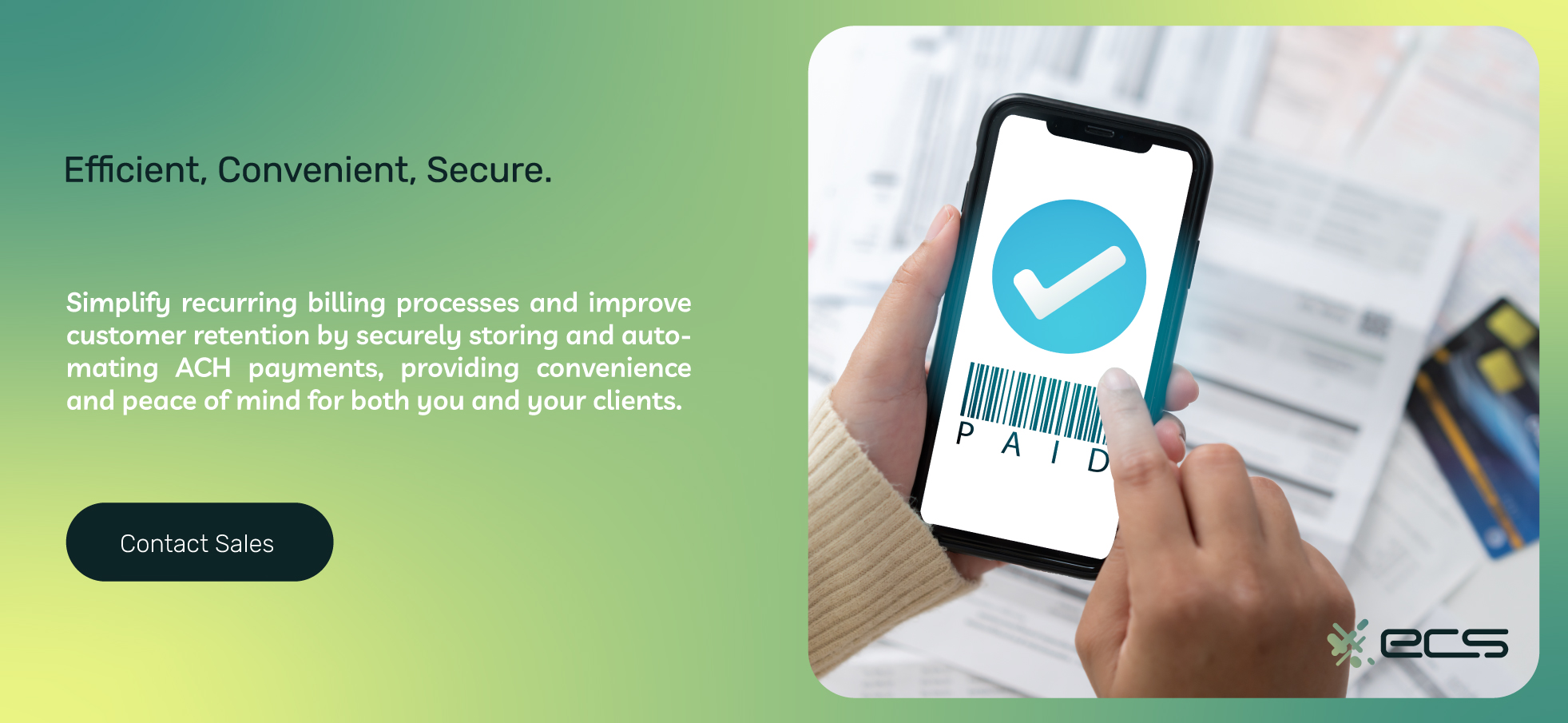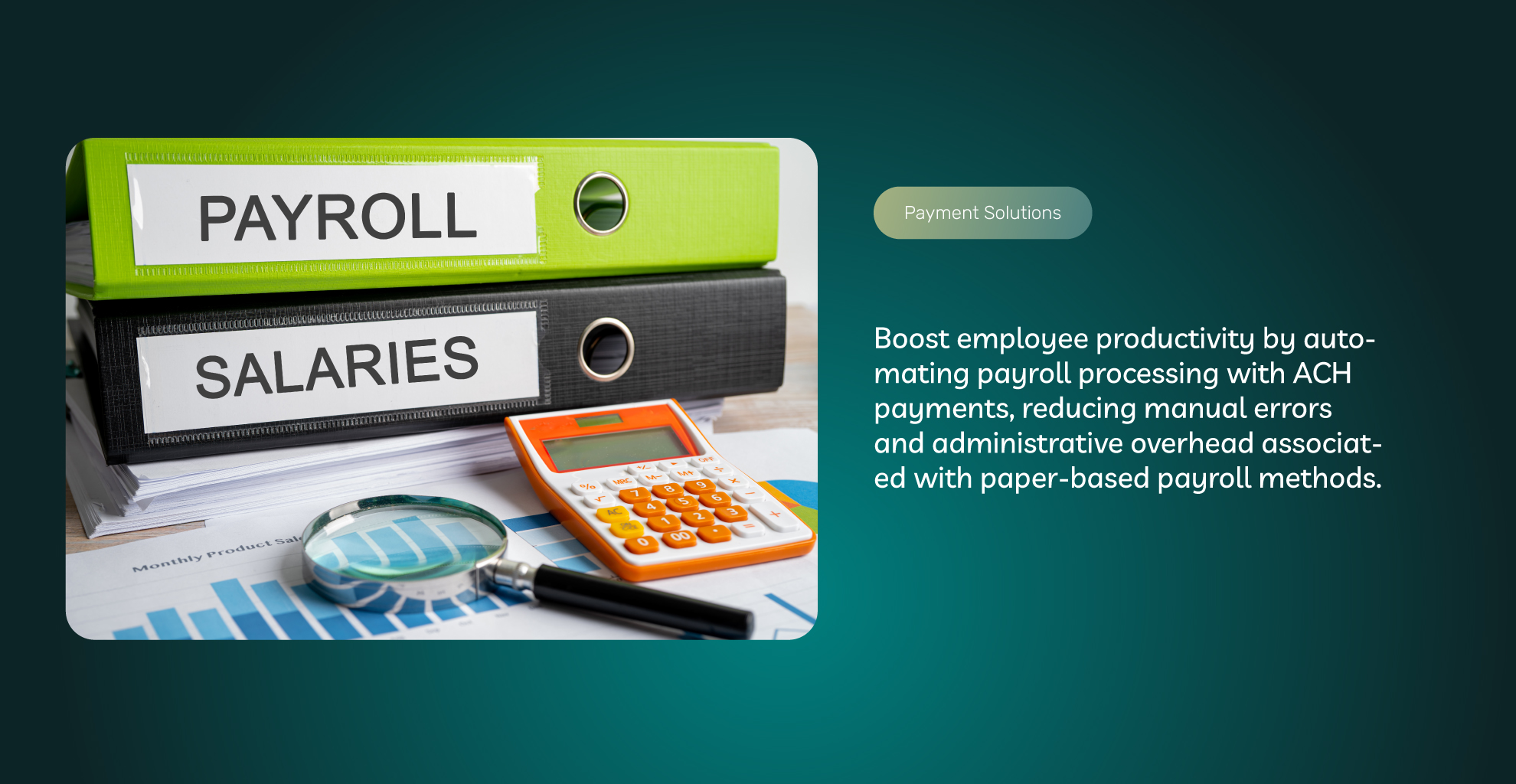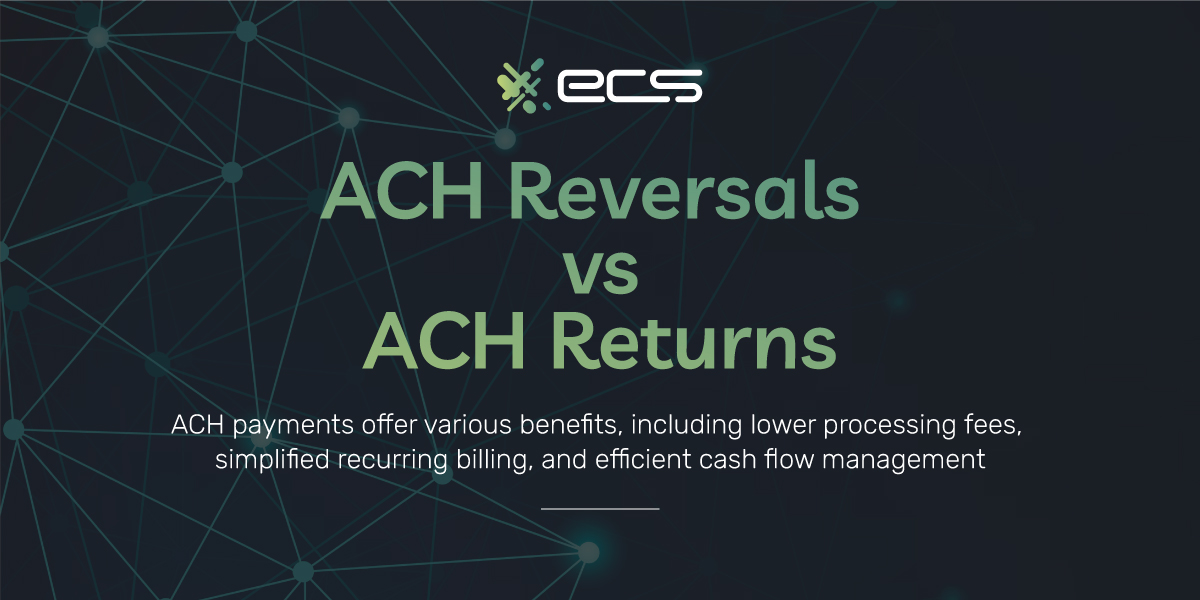Regarding electronic payments, most merchants think of credit cards or debit cards. Today, they may even think of digital wallets and other contactless payment methods. However, Automated Clearing House ACH payments are still very popular with many merchants.
ACH payments have many benefits that merchants can take advantage of for certain transactions. This includes lower fees in some cases, easier cash flow management, and simplifying recurring billing.
While most merchants are familiar with returns or chargebacks with credit cards, the process for ACH payments can be different. Many merchants may not be aware of how ACH reversals or returns are handled. They may also not know how they can be used and the fees or penalties involved.
To help merchants better understand ACH payments, we will outline the typical flow of an ACH payment and how reversals and returns function within the payment ecosystem.
What Is An ACH Payment?
An ACH is a transfer of funds from one bank account to another. The ACH refers to the Automatic Clearing House network used to facilitate the transfer. ACH operators that oversee the entire process are the Federal Reserve and Electronic Payment Networks.
Businesses of all kinds use ACH payments to move money and make payments. Governments also use ACH payments. For example, when tax refunds or benefits are delivered, the government typically uses an ACH transfer to move the money.
When using ACH payments as a merchant, you may access the network via your payment gateway, but the payments are not handled by the same infrastructure used by credit and debit card transactions.
This means there are completely different rules and procedures for handling the transfer. It also means different policies and fraud protection measures.
Credit or debit cards’ procedures and rules are mostly set by the card companies and their associated financial institutions. With ACH payments, the National Automated Clearing House Association(NACHA) oversees ACH rules and processes.
NACHA is not a government agency but a non-profit entity funded by various financial institutions. NACHA works closely with various government agencies to help set regulations around ACH payments.
Part of these regulations and processes involve how disputes are handled within the ACH network.
Generally, disputes are handled by an ACH reversal or an ACH return. Below, we’ll dive into what each of these means and what makes them different.

The Key Difference Between ACH Reversals & ACH Returns
ACH reversals are designed to correct erroneous transactions after the funds have already been moved between the financial institutions. When an ACH reversal is completed, funds are moved back, and credits or debits are applied to return each account to its previous state before the reversal.
An ACH return, on the other hand, is when a transaction fails for various reasons before funds are transferred. There are many reasons an ACH transaction can fail, but most of these are due to errors in the transaction data or insufficient funds in the target account.
A customer can also initiate a stop payment order for a pending ACH transaction, which is different from a wire transfer, which can’t be undone. With a stop payment order, the customer reaches out to their bank before a scheduled debit entry is set to hit their account.
Besides the key differences between ACH reversals and returns, it’s also important to understand the details involved with an ACH reversal or return.
In the next sections, we’ll go over both ACH returns and ACH reversals in detail so you can better understand how the entire ACH system works.
What Is An ACH Return?
An ACH return is when an ACH payment can not be completed or processed for one of several reasons. With all ACH payments, there are two entities involved.
Receiving Depository Financial Institution RDFI
In an ACH transfer, the Receiving Depository Financial Institution (RDFI) is the name given to the bank or institution receiving the money through the intended payment transfer.
Originating Depository Financial Institution ODFI
An originating Depository Financial Institution (ODFI) is the bank or financial institution where the transfer started and where the funds were meant to come from.
With an ACH return or reversal, the RBFI returns the funds or rejects the transfer back to ODFI.
ACH Return Charge
When an ACH return occurs, there are ACH return fees involved. The return fee can range anywhere from $2 to $5 but may be higher in some cases.
Some of the possible reasons for paying higher than normal fees on an ACH return are if there were insufficient funds or if the transfer was made in error.
The fees are used to cover the costs of the return process, but they also prevent transfers that will likely be returned or rejected by the financial institutions involved.
Reasons For ACH Returns
There are many reasons to stop an ACH payment. In each situation, the transaction is blocked and cannot be completed. Below are the most common reasons that cover most ACH returns you will encounter.
Invalid Account Information
If you have an ACH transaction with incorrect account information or an account that doesn’t exist, it will get returned. When creating an ACH transfer, these ACH returns are generally due to typos or manual entry issues.
Your best way to mitigate these issues is to use automated tools to copy account information from one source to another as much as possible. Finally, double-check all transaction information before sending.
Insufficient Funds
If you send an ACH transfer and the funds are unavailable, the ACH transaction will be returned for insufficient funds.
Some banks and institutions may still allow the ACH to go through even if some funds are unavailable. This can happen if the customer’s account has overdraft protection or another fallback measure.
But if funds are unavailable to cover the transaction amount and no protection is in place, the ACH will be returned.
Wrong Name On Account
The name on the transfer and the financial institution’s name on file must match for the ACH to be completed.
If the names do not match, there will be a return. This is a fraud and accuracy protection measure. So, even slight deviations can cause a return.
If you want to avoid this, make sure the name on the transfer is the same name the bank has on file. Don’t use shortened names or other versions of the name the target bank has on file.


Account Not Valid
The system will return the transaction if you attempt to complete an ACH transfer for an invalid or closed account.
This happens if customers change their bank account information but forget to inform your business. It is common in recurring billing situations involving ACH.
Other times, this type of return can happen due to an error in the account information.
Unauthorized Transfer
The transfer will be returned if the account holders do not authorize it. Sometimes, you may see this if the transfer was accidental or can result from fraud.
Wrong Amount
If the transfer amount was entered wrong, that transaction will be returned. Businesses usually cause this by mistyping the account and forgetting to double-check it before sending it.
Avoiding ACH Returns
You can reduce your ACH returns by taking extra steps to ensure all the information is correct, especially with a new customer or if an existing customer hasn’t been billed in a while. They might have changed their account information, so you need to update it in your files.
Some ACH returns are unavoidable, such as for insufficient funds. With these, you will generally pass the fees to the customer to recoup your losses as a merchant.
The ACH Return Process
If you have an ACH return, you must understand the process as a merchant. Like chargeback, when you understand the process, you know how to better protect yourself and manage the situation.
An ACH return starts when the ACH system flags and holds the transaction for review when the payment fails. The review process starts with the RDFI, then determines exactly why the payment failed and confirms the reason. The RDFI initiates the return after confirming the issue.
Once the RDFI initiates the return, the ODFI will receive notification of the return.The ODFI is then responsible for contacting the account owners to notify them that the payment has failed and is being returned.
After completing the return, the bank makes all the adjustments to the original sender’s account to reflect any new balances.
In most cases, the entire ACH return process will take two banking days. However, if you have an ACH return due to fraud or was unauthorized, the return can take longer due to investigations and other factors.
Can You Reverse An ACH Payment?
Yes. An ACH reversal differs from a return because the funds have already been delivered to the target account. However, in certain cases, the ACH payment and funds can be reversed.
What Is An ACH Reversal?
An ACH reversal occurs when someone reverses or undoes a payment that is already being processed.
The main difference between an ACH reversal and a return is that the return payment fails to complete. An ACH reversal transaction would otherwise be completed if left alone, but the originator wants to reverse it.
For most transactions, the originator has 24 hours or one banking day to notify the RDFI of the ACH reversal request.
With an ACH reversal, you have to reverse the entire amount. Partial reversals are not allowed.
Time Limits For ACH Reversals
When it comes to ACH reversals, you can’t just submit them any time you want. To complete the reversal, you must meet certain time limits. You have a five-day limit from the time of the original payment settlement to file an ACH reversal. Anything past this time limit, you are unable to reverse the transaction.
You then have 24 hours to discover the error of the issue to initiate the ACH reversal. The 24 hours fall within the five days. In most cases, this is mostly an honor system to judge the time after noticing the error.
However, if there is a dispute, the parties may have to prove they responded within 24 hours of finding the error.
Finally, the financial institution initiating the reversal will have to show it made a reasonable attempt to notify the receiver of the change. These notifications are usually sent automatically, but they are still required to be made in a timely manner.

How Long Does An ACH Reversal Take?
Depending on the reasons for ACH reversal, they usually take about two business days after the settlement. However, the reversal still needs to be approved first. If there are any disputes or other issues, it may delay the process. Keeping banking hours, holidays, and cutoff times in mind, these timeframes can vary.
Reasons For An ACH Reversal
When you experience an ACH reversal, the most common reason is some kind of error with the transaction. In most cases, both parties agree that the error is present, and there is usually no dispute over the reversal.
Incorrect Recipient
Sometimes, an ACH transaction goes to the wrong person or account. If this happens, the sender can initiate a reversal to retrieve the funds. They can then send the funds to the correct recipient.
Duplicate Transactions
There are times when payments are duplicated for various reasons. This can happen due to billing errors or issues with automation. An ACH reversal essentially undoes the duplicate transaction if it occurs.
Wrong Amount
If the transaction was for the wrong amount, an ACH reversal can remedy the situation and retrieve the incorrect funds. The reason for the wrong amount doesn’t really matter in these situations.
If one party errs or fails to adhere to the agreed-upon details, leading to the wrong amount, they can initiate a reversal.
Fraud
If a transaction is fraudulent or results from fraud, a reversal can be initiated to retrieve the funds. With fraud, there are generally other steps that can happen to try to find the source of the fraud.
Technical Problems
In the event of a technical malfunction causing an unintended transaction, you would use a reversal to retrieve the funds. Some systems may trigger duplicate billings or payments due to a malfunction within an automated system, although this is less common.
Wrong Date
The sender can initiate a reversal to retrieve the funds and send them again at the correct time if they send a transaction on the wrong date.
The ACH Reversal Process
The ACH debit reversal process works a little differently from the return process. There are a few more steps and communications that need to occur between the different institutions and parties involved.
Step 1: Identify The Error
This is when the originator of the transaction determines there was an error with the transactions. The error can be for any of the reasons we listed in the previous section. You must detect the error within five days of the settlement.
Step 2: Request The ACH Reversal
Once the originator has detected the error, they have 24 hours to notify the appropriate financial institution. This notification sent by the originator will contain the specific error and what the remedy is. Usually, this means retrieving the funds.
Step 3: Details Of Transfer Sent
The originating institution then sends the information, including the transaction details, to the RDFI.
Step 4: ACH Reversal Initiation
The next step is for the ODFI to initiate the actual reversal. The ODFI does this by sending the reversal notice to the ACH network along with the transaction details from the previous steps.
Step 5: Notification
The sender notifies the recipient’s financial institution of the reversal, and the institution contacts the bank account owners to inform them of the pending changes. The bank informs the owner of the bank account about the total amount of the transaction reversal.
Step 6: Account Adjustments
The reversal is now processed, and both accounts are adjusted to reflect their new balances. The reversal can involve both credits and debits to the accounts involved to return both accounts to the balances they had before the erroneous transaction.
Step 7: Confirmation
After making the appropriate credits and debits, the ACH system sends a confirmation to both parties indicating that we have completed the reversal process. Both parties will receive the full details of the reversals in the final confirmation.
Similar to returns, much of the reversal process is automated once it is initiated. The automation helps reduce errors and keeps everyone involved notified in a timely manner.

Preventing Returns and Reversals
Some ACH returns and reversals are inevitable due to errors or other issues. However, you want to keep these to a minimum to reduce costs and maintain your cash flow.
Below are some helpful tips to help you prevent unnecessary returns and reversals when accepting ACH payments as a merchant.
Track All Returns And Reversals
As a merchant, you want to keep a close on your return and reversal rates. You also want to monitor which customers use these the most. You may find specific customers or a specific category of customers with an unusually high number of returns or reversals.
In this case, you may want to provide additional filtering or other protection for those specific customers or groups.
Use Fraud Monitoring Tools
Your payment processor and payment gateway have tools you can use to filter out fraud. Using these is critical for reducing your overall reversal and return rates for ACH transactions.
Customer Cancel Options
Implement ways that your customers can cancel their transactions without resorting to a reversal or return. Sometimes, customers make mistakes but have no recourse within the payment system to cancel the transaction.
Use Bank Verification
As a merchant, you should use instant bank verification tools to verify names on accounts as well as balances to ensure the funds are available. These tools can help you avoid many issues leading to reversals and returns.
Monitor IP Addresses
A customer logging in from an entirely new IP address or different IP addresses can indicate fraudulent activity. Ensure your payment system or payment gateway settings include IP monitoring and filtering to detect these IP changes.
You can manually check or completely block these payments depending on your preferred workflow.
Robust Onboarding Process For New Customers
If you frequently take on new customers who use ACH payments, then you want to have a strong onboarding process that verifies bank and customer information before the first payment is made.
You don’t want your onboarding to be prohibitive, but it should use basic KYC principles and verification procedures to ensure that subsequent ACH transactions can go through without any difficulty.
Help With ACH Transactions For Merchants
Merchants can enjoy many benefits by using ACH transactions for their business. ACH payments can cost less than other payment methods. ACH payments also allow you to offer more payment options to your customers, which is always good.
However, accepting and managing ACH payments can require specialized knowledge. This is why partnering with an experienced payment processor who understands ACH payments is critical.
At ECS Payments, we help businesses leverage ACH payments to improve their cash flow, lower costs, and provide a better customer experience.
If you need help accepting ACH payments and want to find the lowest fees possible for your transactions, contact ECS Payments today.
One of our ACH experts can analyze your transaction profile and walk you through the options to optimize your payment workflow using ACH transactions.
Frequently Asked Questions About ACH Reversals vs. ACH Returns
An ACH payment, facilitated by the Automated Clearing House (ACH) network, is a direct money transfer between bank accounts. Businesses can use ACH payments to collect and send money, such as for international payments, recurring bill pay, subscriptions, and payroll. To implement ACH payments into your business, contact ECS Payments.
ACH payments offer various benefits, including lower processing fees, simplified recurring billing, and efficient cash flow management. To implement convenient and cost-effective ACH payments in your business, contact ECS Payments to learn more.
ACH reversals correct transactions that may have errors, while ACH returns occur when a transaction fails or is rejected before funds are transferred. Both processes have fees, and understanding their distinctions is vital for merchants.
ACH returns can happen due to invalid account or routing information, insufficient funds, wrong names on accounts, or unauthorized transfers.
